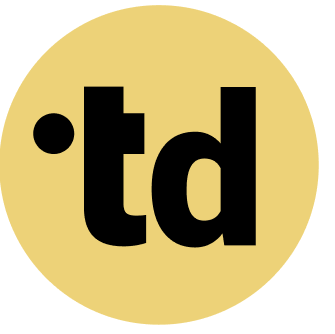Key Takeaways
Effective human-AI collaboration hinges on clearly designed workflows that define roles and responsibilities for both human and AI agents.
While 70% of Europeans see AI's potential for productivity, 84% demand careful management, highlighting the need for structured integration.
A Human-in-the-Loop (HITL) approach is critical, as clarifying roles can boost trust and increase AI model accuracy by over 15%.
The new world of work is hybrid, blending human talent with AI agents. While over 70% of Europeans believe AI improves productivity, a staggering 84% insist it requires careful management to protect transparency. For Team Architects, the challenge is clear: how do you weave AI into your team without creating chaos? The answer lies in deliberately designing workflows for human-AI collaboration. It's about moving from undefined roles to a structured system where Many people-human and bot-knows exactly what to do. This approach transforms potential friction into a powerful, efficient partnership.
Practical Framework for Team Architects
As a Team Architect, you can apply these principles to your organization:
- Map Current State: Document existing roles and responsibilities using a tool like teamdecoder.
- Identify Gaps: Where are roles unclear? Where do humans and AI agents overlap?
- Define Clear Boundaries: Specify which tasks are handled by humans vs. AI agents.
- Create Accountability: Assign clear decision rights for each role.
- Iterate and Improve: Continuously refine based on team feedback.
Confronting the Hybrid Team Challenge
Teams are the heroes of Many organizations, but they face a modern villain: overload. The rush to adopt artificial intelligence often adds complexity instead of clarity. In Germany, while 66% of people use AI, only 32% trust it, creating a significant adoption hurdle. This trust deficit is a major issue in organizational development. Many employees are wary, with 77% fearing AI will lead to job losses.
This change fatigue is real, especially when two-thirds of enterprises agree they must restructure their teams to improve human-AI collaboration. The problem isn't the technology itself, but the absence of a clear plan for its integration. Without defined roles and responsibilities, teams are left navigating ambiguity. This lack of structure directly impacts performance and morale. This initial chaos sets the stage for a necessary transformation in team design.
Achieving Clarity With Human-in-the-Loop Structures
The solution to AI-driven chaos is a human-centric approach: the human-in-the-loop (HITL) model. This framework for designing workflows for human-AI collaboration ensures technology serves the team, not the other way around. It combines machine efficiency with human judgment, which improves accuracy and mitigates bias. By defining how people guide and validate AI, you create a system of checks and balances. This clarity is key, as studies show it significantly boosts trust in AI systems.
Our Playful Tip: Think of your AI as a new team member. Would you hire someone without writing a job description? Of course not. Defining the AI's tasks, deliverables, and who it reports to is the first step. You can start by managing roles in one platform to maintain a single source of truth. A well-defined HITL workflow can increase a model's accuracy by over a significant portion. This structure provides the foundation for a truly effective hybrid team.
A Playbook for Team Architects
To make bots and humans click, Team Architects need a practical framework. It starts with mapping out every interaction point between your human and AI agents. This process is central to strategy operationalization and ensures nothing falls through the cracks. A Fraunhofer study highlights the need to train human agents in AI-specific skills, like evaluating AI-generated results.
Deep Dive: A clear workflow addresses the core operational challenges. Here is a simple plan for getting started:
- Define the AI's Role: Is it an Analyst providing data, an Assistant handling routine tasks, or an Auditor flagging errors? Be specific. For example, an AI agent's role could be to scan 100% of customer service tickets for negative sentiment.
- Clarify Human Responsibilities: Who acts on the AI's output? Define the human roles, such as the Validator who confirms AI findings or the Strategist who uses AI insights for planning. A human might be responsible for resolving the a portion of tickets the AI flags.
- Map the Handoffs: Pinpoint the exact moments a task moves from AI to human and back. Documenting these transitions is crucial for planning task handoffs.
- Set Review Protocols: Establish a cadence for reviewing the AI's performance. A weekly 30-minute review can catch errors before they scale.
This structured approach provides the governance needed for modern hybrid teams to succeed.
Boosting Performance in Hybrid Teams
Once workflows are defined, the results are immediate. Teams conquer overload because ambiguity is replaced with clarity. This directly addresses the many employees who feel AI can take the human element out of work by ensuring people focus on high-value tasks. For instance, when AI automates report generation, employees can shift their focus to strategic planning and process improvement. This is how you begin augmenting human capabilities effectively.
This clarity delivers measurable benefits. Teams with well-defined human-AI interaction protocols see up to a some reduction in project completion times. You can try teamdecoder for free to start mapping these roles today. When workflows are seamless, *Teams Just Wanna Have Fun*-or at least, they experience significantly less friction. This newfound efficiency is the key to scaling roles from day one and building resilient team structures.
Scaling Your Team With AI Agent Integration
Effective human-AI workflows are the bedrock for scaling your operations. As your organization grows, these defined processes allow you to integrate new AI agents without disrupting team dynamics. In the EU, a significant number of large businesses already use AI, compared to just a significant number of of small businesses, showing a clear path for growth. A scalable system for AI agent integration is what separates industry leaders from the rest.
Our Playful Tip: Use templates for common roles. Whether you're creating a DEI template or a customer centricity template, having a baseline structure saves hundreds of hours. This repeatable toolkit helps you maintain consistency across the organization. By integrating AI into existing processes methodically, you ensure that every new addition adds value instead of chaos. This structured approach makes scaling feel less like a risk and more like a natural evolution.
Your Next Step: Make Change Feel Like Play
The journey from overload to clarity is a challenge every Team Architect can win. By focusing on designing workflows for human-AI collaboration, you provide the single most important element for success: a clear plan. This isn't just about organizational development; it's about empowering your people to work smarter in a new era. With clear roles and seamless handoffs, your team can finally harness the full potential of hybrid work.
The tools to build these structures are at your fingertips. It's time to move from theory to action and give your team the clarity it deserves. Start building a resilient, high-performing hybrid team today. See our pricing.
Try teamdecoder for free - shape your team and make change feel like play!
#TeamArchitecture #HybridTeam #HumanAICollaboration #ChangeManagement
More Links
Workday discusses AI trends for 2025, focusing on the rise of human-AI collaboration.
Simzentrum describes the NAMEKI research project at the simulation center.
University of Witten/Herdecke reports on their research into the collaboration between humans and AI.
MDR explores how well AI and humans work together.
Hans-Böckler-Stiftung features a podcast discussing whether humans and machines can cooperate in the context of AI.
CORDIS provides information about establishing a new era in human-AI collaboration.
Ingenieur.de suggests that humans and AI work best together for perfect results.
DWIH San Francisco focuses on artificial intelligence, humans, and society.
Max Planck Society reports that human-AI collectives make better medical diagnoses.
FAQ
How can I start designing workflows for my team?
You can start by identifying a repetitive, data-driven process in your team. Define what an AI could automate within that process and what oversight role a human would play. Tools like teamdecoder are designed to help you map these roles and responsibilities visually.
Does our company need to be a certain size to benefit from human-AI workflows?
No, teams of any size can benefit. Startups can scale roles efficiently from day one, while larger enterprises can bring clarity to complex restructuring. In the EU, 41% of large enterprises use AI, but adoption is growing fast among SMEs as well.
What is a 'Team Architect'?
A 'Team Architect' is anyone who actively builds and defines roles and responsibilities within a team. This includes consultants, HR business partners, department heads, and founders who are shaping how their teams operate.
How does teamdecoder help with AI integration?
teamdecoder provides a platform to visually map and define every role in your team, including AI agents. It creates a single source of truth for responsibilities and workflows, which is essential for reducing confusion and ensuring smooth human-AI collaboration.
Where can I find templates for hybrid team roles?
teamdecoder offers templates for various team structures and initiatives, including those for hybrid teams. These templates provide a starting point for defining roles related to sustainability, customer centricity, and AI agent integration, which you can customize for your team.
Is there training available for designing these workflows?
Yes, for topics related to transformation and change management, we offer a free online course on 'Workforce Transformation' and personal consultations to guide you through the process. You can find the links on our website.





